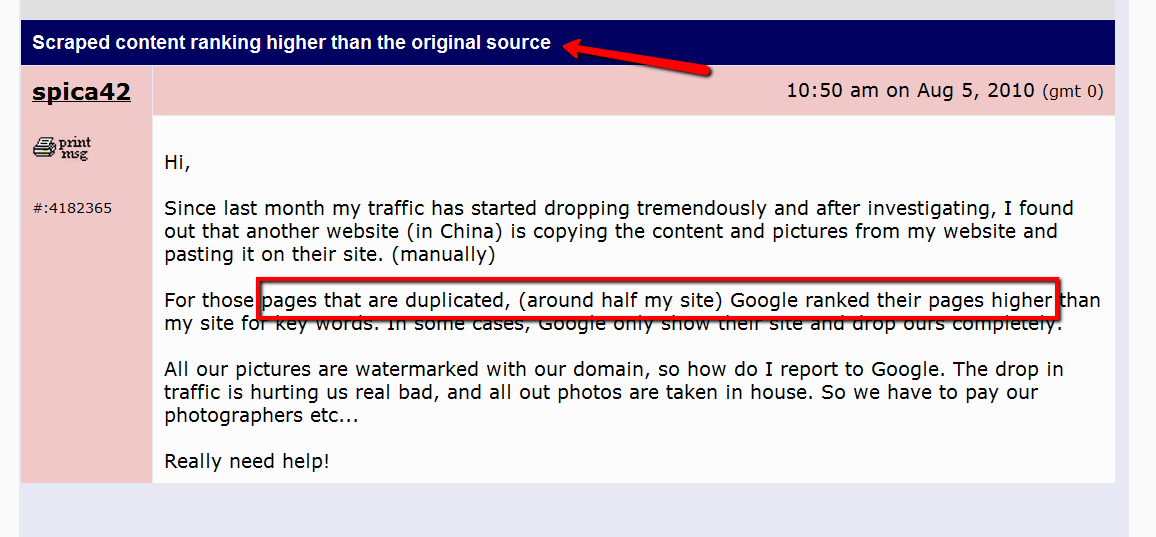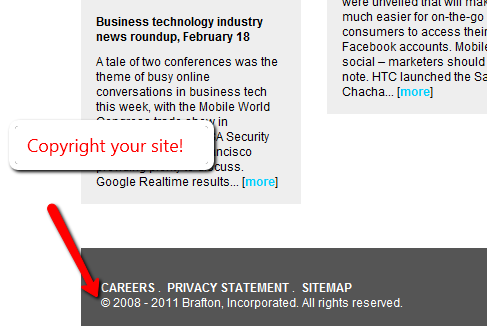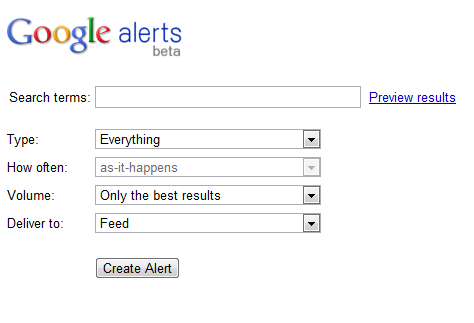When you think of online copyright issues, you probably think of people downloading music illegally. But there’s another very real manifestation of online copyright infringement that can affect website ranking: article scraping.
Article scraping is a taboo practice – one that Google is working hard to fight with recent algorithm updates. The company wants to reward sites for creating original content – and we’ll assume you fall into the category of earnest content marketers.
FYI, in addition to Google’s algorithm penalizing sites that publish content pulled from elsewhere on the web, Matt Cutts speaks about the consequences in more detail in a Google Webmaster video. He suggests auto-generated content is one of “the ways not to generate content.” Instead, he advocates “hand-made” content that offers web users value – this is the content rewarded by Google. For more on successful content marketing strategies, check out Brafton’s tips on Planning for Content Marketing Success, Part 1 and Part 2.
Marketers will likely find that article scrapers who steal their content will be punished. Unfortunately, sometimes there are consequences for original publishers. The growing number of businesses that practice industry news and blog marketing should treat copyrighting their words as a content marketing basic. Here’s why and how.
Why copyright?
A site that scrapes your articles may get higher Google rankings for content you have produced, and copyright statements make it easier to combat this issue.
 To illustrate this idea, think of how terrible it would be if you quietly made a suggestion in a meeting, but then a colleague shared your idea more loudly and your boss gave him or her the credit. This is similar to the potential ills of article scraping, except with article scraping, your idea would be broadcast by someone else to the entire internet-using public instead of just the people in your department, and your company wouldn’t benefit in the end.
To illustrate this idea, think of how terrible it would be if you quietly made a suggestion in a meeting, but then a colleague shared your idea more loudly and your boss gave him or her the credit. This is similar to the potential ills of article scraping, except with article scraping, your idea would be broadcast by someone else to the entire internet-using public instead of just the people in your department, and your company wouldn’t benefit in the end.
At January’s Affiliate Summit West conference, I had the chance to catch up with Bruce Clay about the issue of copyrighting web content. Clay pointed out that when articles are scraped, the site with more authority – not necessarily the source – will rank higher (at least initially). Indeed, this seems to be an issue several site owners have faced.
In a discussion on WebmasterWorld.com titled “Scraped content ranking higher than the original source,” one site owner explained that content stolen from his website was helping a competing site rank higher for his key words. Other webmasters responded saying they’ve faced similar issues.
Google is working to ensure that the primary sources of web content get due credit with its development of the source attribution tag. But Clay said, quite simply, the best way to avoid this issue is to “make sure your site content is copyrighted.”
Protect your site.
The extent to which marketers need to explicitly issue copyright statements for site content is debated. Matt Cutts goes as far as saying he believes that there is no such thing as un-copyrighted web content; as soon as content is published on a site, he believes the original publisher is granted authorship. Still, this is a generous interpretation of source attribution.
Including a site copyright notice is a simple procedure that will give a publisher instant authority when it comes to scammy duplication of landing pages, news articles and/or blog posts. It gives a site more room to demand that article scraping offenders back down. As Clay says, “As soon as your site has teeth, you can bite.”
Usually, a copyright symbol and statement is sufficient notice that your content is protected. It can be posted at the bottom of a site. You’ll want to include:
- The copyright symbol, “©”
- The year of first publication – the year of last (or most recent) publication.
- The name of the copyright owner (ie: your business’ name).
- The phrase, “All rights reserved.”
So, for example, Brafton’s copyright notice reads: © 2008 – 2012 Brafton, Incorporated. All rights reserved.
Find and eliminate offenders.
Once you’ve done the work of copyrighting your site content, you can take charge of protecting your website’s words and search rankings. 
A simple way to ensure that no one is infringing on your copyrighted work is to set up Google Alerts for selections of your site content. This is a method Brafton has used to find some article scrapers, and it is also advocated by Bruce Clay. Simply pick a sentence somewhere in the middle of your article or blog and paste it into Google Alerts’ “search terms” field. If you get an update indicating that your content has been published on another site without due credit or links, contact the site owner immediately and make clear that your site is copyrighted.
You can take this content protection a step further by reporting offending sites to Google. The search giant offers a tool that guides users on how to request that content be removed from the web.
Copyscape.com is another tool that makes it easy to find copied content on the web. It acts as a search engine that finds content scraped from URLs you provide.
Content marketing can be an extremely rewarding way to generate inbound links and improve search rankings. In fact, in its SEO starter guide, Google says:
Creating unique and compelling content will likely influence your website more than [any other factor of SEO].
Once you’ve put in the time and resources to develop custom web content, copyright your content to make sure your site – and your brand – get the ranking and relevant traffic you deserve.

